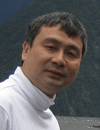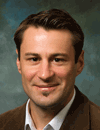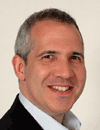
Wednesday, 18 May 201108:00 | Registration | |
Session: Genetics in Single Cell Analysis |
| | 09:30 |  | Keynote Presentation Development and Applications of Single cell RNA-Seq Analysis
Kai Lao, Principal Scientist, Applied Biosystems, United States of America
RNA-Seq analysis is a powerful strategy to connect genotype to phenotype of a cell. In this presentation, I will review the history, progress, potential applications, and future developments of single cell RNA-Seq analysis |
| 10:00 | Single-Cell Analysis by qPCR coupled With Reusable cDNA Library
Hideki Kambara, Fellow, Hitachi Central Research Laboratory, Japan
New technology for analyzing multiple gene expressions in a single-cell has been developed, which uses qPCR coupled with a reusable cDNA library on magnetic beads. It can detect several copies of mRNA accuratel. | 10:30 | Coffee Break and Networking in the Exhibition Hall | 11:45 | Single-Allele Analysis of Transcription Kinetics in Single Living Mammalian Cells
Yaron Shav-Tal, Senior Lecturer, Bar-Ilan University, Israel
Transcriptional activity of a single allele of cyclin D1 was measured during the cell cycle using live-cell imaging, demonstrating how high-resolution information of transcription kinetics can be achieved at the level of a single-allele in single living human cells. | 12:15 | Lunch and Networking in the Exhibition Hall | 13:30 | Poster Session | 14:15 | Genetic Profiling of Circulating Tumor Cells by Means of Flow Cytometry and PCR
Petra Hartmann, , Beckman Coulter Biomedical GmbH, Germany
Single Cell Expression Profiling of circulationg tumor cells can help to understand the heterogeneity of theses very rare cell populations and will contribute to investigate the starting point for metastatic events. | 14:45 | Whole Genome Amplification as the Key to Multiple Molecular Genetic and Cytogenetic Analyses on the Single Cell Level
Thomas Kroneis, Head, Medical University of Graz, Austria
Single cell whole genome amplification (WGA) provides the basis for multiple analyses at the single cell level. In the context of rare cell analysis one cell can be subjected to DNA fingerprint analysis, sequencing, and metaphase comparative genome hybridization. | 15:15 | Coffee Break and Networking in the Exhibition Hall | |
Session: Novel Single Cell Analysis Platforms |
| | 16:00 |  | Keynote Presentation Single Stem Cell Fate Mapping On Chip
Matthias Lutolf, Head, Ecole Polytechnique Federale de Lausanne, Switzerland
This presentation will discuss a novel microfluidic platform which allows to sequentially trap the progeny of single hematopoietic stem cells and, in combination with single cell qRT-PCR, map their genealogical relationships and fates. |
| 16:30 | Conserved Patterns of Stem Cell Fate in Adult Tissues
Benjamin Simons, Professor, University of Cambridge, United Kingdom
From lineage tracing studies of a variety of tissue types across a range of organisms, we show that adult stem cells follow simple, restricted, and conserved patterns of fate, giving new insights into mechanisms of molecular regulation. | 17:00 | New Methods for Detection, Imaging, and Manipulation of Nano-Objects: Going Beyond Fluorescence Labeling and Optical Tweezing
Philipp Kukura, , University of Oxford, United Kingdom
I will discuss the use of interferometric scattering detection for imaging single virus motion and single nonfluorescent molecules. Furthermore, I present a new nanofluidic technique for contact-free and stable trapping of nanoparticles such as gold and polymer beads or lipid vesicles. | 17:30 | Close of Day One |
Thursday, 19 May 2011 |
Session: Analysis and Detection of Single Cells |
| | 09:15 |  | Keynote Presentation A Step Towards Practical Single Cell Proteomics: A Microfluidic Antibody Capture Chip Incorporating Single Molecule Detection
David Klug, Co-Founder/Professor, Imperial College London, United Kingdom
|
| 10:00 | Single Cell Metabolomics
Renato Zenobi, Professor, ETH Zurich, Switzerland
Two novel strategies to carry out label-free detection of metabolites from single cells will be discussed: a micropatterned sample plate for MALDI-MS that allows rapid aliquoting of cell suspensions to =1 cell per sample site, and a microfluidic chip for cell processing and sample preparation with an interface for MS detection. | 10:30 | Coffee and Networking in the Exhibition Hall | 11:15 | Heterogenecity of Circulating Epithelial Tumor Cells as Determined by Expression Profiling of Individually Manipulated and Deposited Single Cells
Katharina Pachmann, Senior Scientist, Universitätsklinikum Jena, Germany
Monitoring CETC provides the earliest and most reliable indicator of successful treatment. It also, for the first time, allows molecular characterisation of individual circulating tumor cells and help to reveal mechanisms involved in relapse. | 11:45 | Opportunities and Challenges in Single Cell Omics
Steven Bodovitz, Principal, Bioperspectives, United States of America
Single cell omics has the potential to transform cellular heterogeneity from a source of noise into a source of new discoveries.
| 12:15 | Lunch and Networking in the Exhibition Hall | 13:30 | Poster Session | |
Session: Advances in Single Cell Imaging |
| | 14:15 | Infrared Analysis at the Single Cell Level: A New Beginning
Peter Gardner, Head, University of Manchester, United Kingdom
The development of a correction algorithm that removes distortion of infrared spectra from single cells now means that spectra can be interpreted in terms of changing biochemistry. Drug-cell interaction studies and the possibility of IR screening will be considered. | 14:45 | Amplification and Filtering During Gradient Sensing by Nerve Growth Cones, Probed With a Shear-Less Microfluidic assay and Single Quantum Dot Imaging
Mathieu Morel, Research Assistant, Université Pierre et Marie Curie, France
To test the information-processing capability of nerve growth cones, we develop novel microfluidic devices that enable shear-free stimulation with chemical gradients. Thereby, we provide an integrative view of single growth cones as sensing, amplifying and filtering devices. | 15:15 | Coffee and Networking in the Exhibition Hall | 15:45 | Single Cell Raman Microspectroscopy
Juergen Popp, Professor, Friedrich Schiller University Jena, Germany
Here we present our latest results concerning the application of Raman microspectroscopy for a fast identification and characterization of single microorganisms and for an objective evaluation of cells or tissue for an early diagnosis of diseases like e.g. cancer. | 16:15 | Bridging the Gap: Integrated Workflows for Single Cell Analysis
Anya Hunt, Regional Sales Manager, Molecular Machines and Industries AG, Switzerland
Today front-end technologies are already capable of isolating single cells and back-end technologies for genomics and transcriptomics have sufficient sensitivity for single cell Omics as it will be presented by Dr. Steven Bodovitz. These two ends of the entire workflow t needed to be bridged for reliable statistical and genetic analysis of multiple single cells. This presentation aims to provide an overview of established and emerging integrated work flows starting from different sample material like tissue, cell smears or blood and bone marrow. | 16:45 | Close of Conference |
|

 Add to Calendar ▼2011-05-18 00:00:002011-05-19 00:00:00Europe/LondonSingle Cell Analysis CongressSingle Cell Analysis Congress in LondonLondonSELECTBIOenquiries@selectbiosciences.com
Add to Calendar ▼2011-05-18 00:00:002011-05-19 00:00:00Europe/LondonSingle Cell Analysis CongressSingle Cell Analysis Congress in LondonLondonSELECTBIOenquiries@selectbiosciences.com